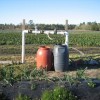
More and more farmers are growing small crops of fruits and vegetables for specialty local markets. They commonly grow several crops at different stages of development at the same time so they have a variety of produce to sell to customers. This forces farmers to make several fertilizer calculations because of their diverse crop demands, because water and nutrient requirements vary according to the crop and stage of development. This 7-page fact sheet helps growers correctly interpret fertilizer recommendations and calculate accurate fertilizer amounts to be used based on crop nutrient requirements. Written by Jim DeValerio, David Nistler, Robert Hochmuth, and Eric Simonne, and published by the UF Department of Horticultural Sciences, October 2012.
http://edis.ifas.ufl.edu/hs1206
Category: Agriculture
Pepper Fruit Fly Atherigona orientalis (Schiner) (Insecta: Diptera: Muscidae) (EENY539/IN948)
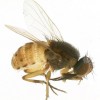 Although it is commonly referred to as the pepper fruit fly or tomato fruit fly, Atherigona orientalis is not a true fruit fly in the family Tephritidae, but rather a member of the Muscidae, the same family to which the common house fly belongs. It is found in most tropical and subtropical areas of the world and is usually considered a secondary pest or “trash fly.” But it can sometimes be a primary pest of certain agricultural crops, most notably plants in the family Solanaceae. This 4-page fact sheet was written by Kenneth L. Hibbard and William A. Overholt, and published by the UF Department of Entomology and Nematology, September 2012.
Although it is commonly referred to as the pepper fruit fly or tomato fruit fly, Atherigona orientalis is not a true fruit fly in the family Tephritidae, but rather a member of the Muscidae, the same family to which the common house fly belongs. It is found in most tropical and subtropical areas of the world and is usually considered a secondary pest or “trash fly.” But it can sometimes be a primary pest of certain agricultural crops, most notably plants in the family Solanaceae. This 4-page fact sheet was written by Kenneth L. Hibbard and William A. Overholt, and published by the UF Department of Entomology and Nematology, September 2012.
http://edis.ifas.ufl.edu/in948
Spring Viremia of Carp (VM142/VM106)
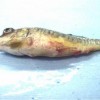 Spring viremia of carp is a viral disease that can cause significant mortality in several carp species including the common carp. It was reported in koi and feral carp in the United States for the first time in 2002. Diagnosis in farm raised fish in the U.S. may result in quarantine of the infected fish and depopulation. This 5-page fact sheet is intended to inform veterinarians, biologists, culturists, and hobbyists about Spring viremia of carp. Written by Barbara D. Petty, Ruth Francis-Floyd, and Roy P.E. Yanong, and published by the UF Department of Fisheries and Aquatic Sciences, August 2012.
Spring viremia of carp is a viral disease that can cause significant mortality in several carp species including the common carp. It was reported in koi and feral carp in the United States for the first time in 2002. Diagnosis in farm raised fish in the U.S. may result in quarantine of the infected fish and depopulation. This 5-page fact sheet is intended to inform veterinarians, biologists, culturists, and hobbyists about Spring viremia of carp. Written by Barbara D. Petty, Ruth Francis-Floyd, and Roy P.E. Yanong, and published by the UF Department of Fisheries and Aquatic Sciences, August 2012.
http://edis.ifas.ufl.edu/vm106
Alternatives to Synthetic Herbicides for Weed Management in Container Nurseries (ENH1203/EP464)
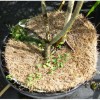 Weed management is one of the most critical and costly aspects of container nursery production. This is most effectively achieved through preventative practices, primarily with preemergent herbicides. But there are valid reasons for managing weeds with alternatives to synthetic herbicides, including sanitation, exclusion, prevention, hand weeding, mulching, and the use of cover crops, heat, and nonsynthetic herbicides. This 6-page fact sheet was written by Gary W. Knox, Matthew Chappell, and Robert H. Stamps, and published by the UF Department of Environmental Horticulture, September 2012.
Weed management is one of the most critical and costly aspects of container nursery production. This is most effectively achieved through preventative practices, primarily with preemergent herbicides. But there are valid reasons for managing weeds with alternatives to synthetic herbicides, including sanitation, exclusion, prevention, hand weeding, mulching, and the use of cover crops, heat, and nonsynthetic herbicides. This 6-page fact sheet was written by Gary W. Knox, Matthew Chappell, and Robert H. Stamps, and published by the UF Department of Environmental Horticulture, September 2012.
http://edis.ifas.ufl.edu/ep464
UF-T3 and UF-T4: Two Sterile Lantana camara Varieties (ENH1202/EP463)
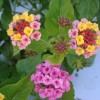 Lantana camara plants are valued for their bright flower color, butterfly attraction, tolerance to harsh environmental conditions, low maintenance requirements, and ease of propagation and production. But many existing varieties can be weedy or invasive when grown in tropical and subtropical regions. So in 2004, UF/IFAS started a program to develop sterile L. camara varieties with little to no invasive potential.
Lantana camara plants are valued for their bright flower color, butterfly attraction, tolerance to harsh environmental conditions, low maintenance requirements, and ease of propagation and production. But many existing varieties can be weedy or invasive when grown in tropical and subtropical regions. So in 2004, UF/IFAS started a program to develop sterile L. camara varieties with little to no invasive potential.
This 8-page fact sheet introduces the recently released UF-T3 and UF-T4 lantana varieties that have resulted from these breeding, selection, and testing efforts. Written by Zhanao Deng, David M. Czarnecki II, Sandra B. Wilson, Gary W. Knox, and Rosanna Freyre, and published by the UF Department of Environmental Horticulture, August 2012.
http://edis.ifas.ufl.edu/ep463
Cactus Moth, Cactoblastis cactorum (Berg) (Insecta: Lepidoptera: Pyralidae) (EENY056/IN213)
 Since its arrival in the Florida Keys in 1989, this invasive species has become a serious threat to the diversity and abundance of Opuntia cactus in North America. The spread of this moth raises concerns about harm to rare opuntioid species (prickly pear and related cacti), the endangerment of wild opuntioids in the southwestern United States and Mexico and the consequent effects on entire desert ecosystems and economic hardship for communities in Mexico that cultivate and sell Opuntia. This 5-page fact sheet was written by D. H. Habeck, F. D. Bennett, and Christine Miller, and published by the UF Department of Entomology and Nematology, September 2012.
Since its arrival in the Florida Keys in 1989, this invasive species has become a serious threat to the diversity and abundance of Opuntia cactus in North America. The spread of this moth raises concerns about harm to rare opuntioid species (prickly pear and related cacti), the endangerment of wild opuntioids in the southwestern United States and Mexico and the consequent effects on entire desert ecosystems and economic hardship for communities in Mexico that cultivate and sell Opuntia. This 5-page fact sheet was written by D. H. Habeck, F. D. Bennett, and Christine Miller, and published by the UF Department of Entomology and Nematology, September 2012.
http://edis.ifas.ufl.edu/in213
Cultivos en asocio, diversidad de cultivos y manejo integrado de plagas (ENY862S/IN932)
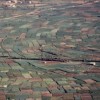 El cultivo en asocio (o cultivo intercalado) es una práctica en donde se siembran diversos cultivos en un mismo campo. Adicionalmente plantas que no son cultivos, tales como las malezas, cultivos rastreros o de cobertura, así como plantas del hábitat, se pueden combinar en el espacio y tiempo para influir en el número de plagas o artrópodos benéficos en un cultivo principal. This 7-page fact sheet was written by Hugh Smith y Oscar Liburd. Traducido por Ana Lucrecia MacVean, and published by the UF Department of Entomology and Nematology, June 2012.
El cultivo en asocio (o cultivo intercalado) es una práctica en donde se siembran diversos cultivos en un mismo campo. Adicionalmente plantas que no son cultivos, tales como las malezas, cultivos rastreros o de cobertura, así como plantas del hábitat, se pueden combinar en el espacio y tiempo para influir en el número de plagas o artrópodos benéficos en un cultivo principal. This 7-page fact sheet was written by Hugh Smith y Oscar Liburd. Traducido por Ana Lucrecia MacVean, and published by the UF Department of Entomology and Nematology, June 2012.
http://edis.ifas.ufl.edu/in932
Stable Fly (Dog Fly) Control (ENY267/IG133)
 The stable fly is a blood-sucking filth fly of considerable importance to people, pets, livestock, and the tourist industry in Florida. Filth flies, including stable flies, exploit habitats and food sources created by human activities, such as farming. Stable flies primarily attack animals for a blood meal, but in the absence of an animal host, they will bite people. This 4-page fact sheet was written by P. E. Kaufman and E. N. I. Weeks, and published by the UF Department of Entomology and Nematology, August 2012.
The stable fly is a blood-sucking filth fly of considerable importance to people, pets, livestock, and the tourist industry in Florida. Filth flies, including stable flies, exploit habitats and food sources created by human activities, such as farming. Stable flies primarily attack animals for a blood meal, but in the absence of an animal host, they will bite people. This 4-page fact sheet was written by P. E. Kaufman and E. N. I. Weeks, and published by the UF Department of Entomology and Nematology, August 2012.
http://edis.ifas.ufl.edu/ig133
An Overview of US Papaya Production, Trade, and Consumption (FE914)
![fe914 Figure 1. US fresh papaya imports by origin, 2002–2011 (metric tonnes [t]). Source: USDA/FAS (2012).](http://edis-news.ifas.ufl.edu/wp-content/uploads/2012/09/fe914-100x100.jpg) The United States produces close to 14,000 t of papaya annually. Consumption of the fruit is on the upswing and the development of new cultivars tolerant to the Papaya Ring Spot Virus encourage many growers in South Florida to taking a second look at producing papaya for the domestic market. This 8-page fact sheet provides information on domestic trends in the production and trade of fresh papaya in the U.S. Also included is a price analysis at the wholesale level for representative markets on the US East and West Coasts. Written by Edward A. Evans, Fredy H. Ballen, and Jonathan H. Crane, and published by the UF Department of Food and Resource Economics, September 2012.
The United States produces close to 14,000 t of papaya annually. Consumption of the fruit is on the upswing and the development of new cultivars tolerant to the Papaya Ring Spot Virus encourage many growers in South Florida to taking a second look at producing papaya for the domestic market. This 8-page fact sheet provides information on domestic trends in the production and trade of fresh papaya in the U.S. Also included is a price analysis at the wholesale level for representative markets on the US East and West Coasts. Written by Edward A. Evans, Fredy H. Ballen, and Jonathan H. Crane, and published by the UF Department of Food and Resource Economics, September 2012.
http://edis.ifas.ufl.edu/fe914
Citrus Mealybug Planococcus citri (Risso) (Insecta: Hemiptera: Pseudococcidae) (EENY537/IN947)
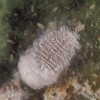 The citrus mealybug is a common pest of citrus primarily in greenhouses, and of several ornamental plants in Florida. It has been recognized as a difficult to control pest in Europe since 1813, where it is called the greenhouse mealybug and in the United States since 1879. This 4-page fact sheet was written by Harsimran Kaur Gill, Gaurav Goyal, and Jennifer Gillett-Kaufman, and published by the UF Department of Entomology and Nematology, September 2012.
The citrus mealybug is a common pest of citrus primarily in greenhouses, and of several ornamental plants in Florida. It has been recognized as a difficult to control pest in Europe since 1813, where it is called the greenhouse mealybug and in the United States since 1879. This 4-page fact sheet was written by Harsimran Kaur Gill, Gaurav Goyal, and Jennifer Gillett-Kaufman, and published by the UF Department of Entomology and Nematology, September 2012.
http://edis.ifas.ufl.edu/in947
Solutions for Managing Tomato Culls in Florida Tomato Packinghouses (SL371/SS572)
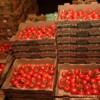 Florida is the single largest producer of fresh-market tomatoes in the United States. Driven by urbanization and generation of large amounts of tomato culls, tomato packers in Florida often struggle to find ways to dispose of culls generated during the cleaning and sanitizing of tomatoes. This 5-page fact sheet provides guidelines for appropriate management practices to increase the use of culls produced in tomato packinghouses in Florida. Written by Gurpal Toor, Maninder Chahal, and Bielinski Santos, and published by the UF Department of Soil and Water Science, September 2012.
Florida is the single largest producer of fresh-market tomatoes in the United States. Driven by urbanization and generation of large amounts of tomato culls, tomato packers in Florida often struggle to find ways to dispose of culls generated during the cleaning and sanitizing of tomatoes. This 5-page fact sheet provides guidelines for appropriate management practices to increase the use of culls produced in tomato packinghouses in Florida. Written by Gurpal Toor, Maninder Chahal, and Bielinski Santos, and published by the UF Department of Soil and Water Science, September 2012.
http://edis.ifas.ufl.edu/ss572
Production of Miscanthus x giganteus for Biofuel (SSAGR292/AG297)
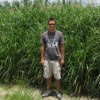 The bioenergy industry has primarily used Miscanthus for combustion in power plants. It has desirable properties of low water and ash contents following a dry-down period before harvest. Current research is focused on its potential as a biomass crop for direct combustion and for lignocellulosic conversion to ethanol and other biofuels. This 3-page fact sheet was written by John Erickson, Curtis Rainbolt, Yoana Newman, Lynn Sollenberger, and Zane Helsel, and published by the UF Department of Agronomy, September 2012.
The bioenergy industry has primarily used Miscanthus for combustion in power plants. It has desirable properties of low water and ash contents following a dry-down period before harvest. Current research is focused on its potential as a biomass crop for direct combustion and for lignocellulosic conversion to ethanol and other biofuels. This 3-page fact sheet was written by John Erickson, Curtis Rainbolt, Yoana Newman, Lynn Sollenberger, and Zane Helsel, and published by the UF Department of Agronomy, September 2012.
http://edis.ifas.ufl.edu/ag297
Agricultural Management Options for Climate Variability and Change: High-Residue Cover Crops (AE488)
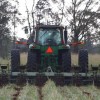 While decision making in agriculture involves many aspects beyond climate, including economics, social factors, and policy considerations, climate-related risks are a primary source of yield and income variability. This 4-page fact sheet focuses on the use of high-biomass winter cover crops to improve production systems. Written by Joel Love, Jed Dillard, Kirk Brock, Daniel Dourte, and Clyde Fraisse, and published by the UF Department of Agricultural and Biological Engineering, August 2012.
While decision making in agriculture involves many aspects beyond climate, including economics, social factors, and policy considerations, climate-related risks are a primary source of yield and income variability. This 4-page fact sheet focuses on the use of high-biomass winter cover crops to improve production systems. Written by Joel Love, Jed Dillard, Kirk Brock, Daniel Dourte, and Clyde Fraisse, and published by the UF Department of Agricultural and Biological Engineering, August 2012.
http://edis.ifas.ufl.edu/ae488
Anthracnose Fruit Rot of Strawberry (PP207/PP130)
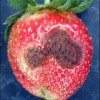 Anthracnose fruit rot is an important disease for strawberry worldwide. Lesions appear as dark, sunken spots on infected fruit. This 4-page fact sheet was written by James C. Mertely and Natalia. A. Peres, and published by the UF Department of Plant Pathology, September 2012.
Anthracnose fruit rot is an important disease for strawberry worldwide. Lesions appear as dark, sunken spots on infected fruit. This 4-page fact sheet was written by James C. Mertely and Natalia. A. Peres, and published by the UF Department of Plant Pathology, September 2012.
http://edis.ifas.ufl.edu/pp130
Colletotrichum Crown Rot (Anthracnose Crown Rot) of Strawberries (PP238/PP156)
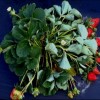 Colletotrichum crown rot is caused by the fungi Colletotrichum gloeosporioides and Colletotrichum fragariae. Both pathogens kill strawberry plants by aggressively invading crown tissue. Crown rot is a serious disease in warm production regions, such as those in the southeastern United States. This 3-page fact sheet was written by Natalia A. Peres and Steven J. MacKenzie, and published by the UF Department of Plant Pathology, September 2012.
Colletotrichum crown rot is caused by the fungi Colletotrichum gloeosporioides and Colletotrichum fragariae. Both pathogens kill strawberry plants by aggressively invading crown tissue. Crown rot is a serious disease in warm production regions, such as those in the southeastern United States. This 3-page fact sheet was written by Natalia A. Peres and Steven J. MacKenzie, and published by the UF Department of Plant Pathology, September 2012.
http://edis.ifas.ufl.edu/pp156
Pigeon Fever in Florida's Horses (VM185)
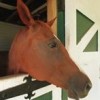 For the first time in recent history, Florida is seeing a large number of cases of pigeon fever in horses. As of June 2012, the state is reporting over 60 suspected equine cases in Okaloosa, Walton, and Marion counties. The majority of cases have been confined to the Panhandle. Pigeon fever is caused by Corynebacterium pseudotuberculosis, which is a gram-positive, rod-shaped bacteria. Horses with the most common form of pigeon fever will develop external abscesses. This 2-page fact sheet was written by Amanda M. House, and published by the UF Department of Veterinary Medicine-Large Animal Clinical Sciences, August 2012.
For the first time in recent history, Florida is seeing a large number of cases of pigeon fever in horses. As of June 2012, the state is reporting over 60 suspected equine cases in Okaloosa, Walton, and Marion counties. The majority of cases have been confined to the Panhandle. Pigeon fever is caused by Corynebacterium pseudotuberculosis, which is a gram-positive, rod-shaped bacteria. Horses with the most common form of pigeon fever will develop external abscesses. This 2-page fact sheet was written by Amanda M. House, and published by the UF Department of Veterinary Medicine-Large Animal Clinical Sciences, August 2012.
http://edis.ifas.ufl.edu/vm185
An Overview of Global Papaya Production, Trade, and Consumption (FE913)
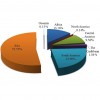 The market demand for tropical fruits has been growing steadily over the past two decades. Global papaya production has grown significantly over the last few years, mainly as a result of increased production in India. Papaya has become an important agricultural export for developing countries, where export revenues of the fruit provide a livelihood for thousands of people, especially in Asia and Latin America. Papaya exports contribute to the growing supply of healthy food products on international markets. The top three exporting countries accounted for 63.28 percent of the total global exports of papaya between 2007 and 2009, with more than half of those exports going to the United States. This 7-page fact sheet provides information on global trends in the production and trade of papaya. An overview of the current and future trends of global papaya production and trade, and the main papaya exporting and importing countries is presented herewith. Written by Edward A. Evans and Fredy H. Ballen, and published by the UF Department of Food and Resource Economics, September 2012.
The market demand for tropical fruits has been growing steadily over the past two decades. Global papaya production has grown significantly over the last few years, mainly as a result of increased production in India. Papaya has become an important agricultural export for developing countries, where export revenues of the fruit provide a livelihood for thousands of people, especially in Asia and Latin America. Papaya exports contribute to the growing supply of healthy food products on international markets. The top three exporting countries accounted for 63.28 percent of the total global exports of papaya between 2007 and 2009, with more than half of those exports going to the United States. This 7-page fact sheet provides information on global trends in the production and trade of papaya. An overview of the current and future trends of global papaya production and trade, and the main papaya exporting and importing countries is presented herewith. Written by Edward A. Evans and Fredy H. Ballen, and published by the UF Department of Food and Resource Economics, September 2012.
http://edis.ifas.ufl.edu/fe913
Cogongrass (Imperata cylindrica) Biology, Ecology, and Management in Florida Grazing Lands (SSAGR52/WG202)
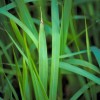 Cogongrass is found on every continent and is considered a weedy pest in 73 countries. In the U.S., cogongrass is found primarily in the Southeast. It was accidentally introduced into Alabama in the early 1900s, and purposely introduced as a potential forage and soil stabilizer in Florida (and other states) in the 1930s and early 1940s. However, soon after investigations began it was realized that cogongrass could be a weedy pest. Since its introduction, cogongrass has spread to nearly every county in Florida. In some cases, it has completely taken over pastures so that it is the only species present. This is a common thread where cogongrass invades; it quickly displaces desirable species and requires intensive management. This 5-page fact sheet was written by B. A. Sellers, J. A. Ferrell, G. E. MacDonald, K. A. Langeland, and S. L. Flory, and published by the UF Department of Agronomy, August 2012.
Cogongrass is found on every continent and is considered a weedy pest in 73 countries. In the U.S., cogongrass is found primarily in the Southeast. It was accidentally introduced into Alabama in the early 1900s, and purposely introduced as a potential forage and soil stabilizer in Florida (and other states) in the 1930s and early 1940s. However, soon after investigations began it was realized that cogongrass could be a weedy pest. Since its introduction, cogongrass has spread to nearly every county in Florida. In some cases, it has completely taken over pastures so that it is the only species present. This is a common thread where cogongrass invades; it quickly displaces desirable species and requires intensive management. This 5-page fact sheet was written by B. A. Sellers, J. A. Ferrell, G. E. MacDonald, K. A. Langeland, and S. L. Flory, and published by the UF Department of Agronomy, August 2012.
http://edis.ifas.ufl.edu/wg202
Fusarium Wilt of Canary Island Date Palm (PP215/PP139)
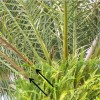 As the name implies, Fusarium wilt of Canary Island date palm is primarily observed on the Canary Island date palm. It was first documented in the United States in the 1970s in California, but it was not documented in Florida until 1994. It now occurs throughout the state. The fungus obstructs the xylem (water-conducting) tissue, which results in desiccation and death. This 5-page fact sheet was written by Monica L. Elliott, and published by the UF Department of Plant Pathology, July 2012.
As the name implies, Fusarium wilt of Canary Island date palm is primarily observed on the Canary Island date palm. It was first documented in the United States in the 1970s in California, but it was not documented in Florida until 1994. It now occurs throughout the state. The fungus obstructs the xylem (water-conducting) tissue, which results in desiccation and death. This 5-page fact sheet was written by Monica L. Elliott, and published by the UF Department of Plant Pathology, July 2012.
http://edis.ifas.ufl.edu/pp139
Feeding Ensiled Citrus Pulp to Finishing Pigs (AN282)
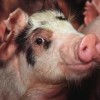 For the past six years, feed costs have continually increased and Florida has greater feed costs than the rest of the country because grain must be shipped here from where it was produced. But the Florida pork producers generally get prices above market value for their pigs because of strong demand for locally-raised foods. These Florida pork producers could become more profitable if they could significantly decrease their production costs. In Florida, pork producers have an opportunity to use citrus byproducts as a feedstuff to substantially and sustainably decrease their feed costs. This 4-page fact sheet was written by J. D. Crosswhite, N. B. Myers, A. T. Adesogan, J. H. Brendemuhl, D. D. Johnson, and C. C. Carr, and published by the UF Department of Animal Sciences, August 2012.
For the past six years, feed costs have continually increased and Florida has greater feed costs than the rest of the country because grain must be shipped here from where it was produced. But the Florida pork producers generally get prices above market value for their pigs because of strong demand for locally-raised foods. These Florida pork producers could become more profitable if they could significantly decrease their production costs. In Florida, pork producers have an opportunity to use citrus byproducts as a feedstuff to substantially and sustainably decrease their feed costs. This 4-page fact sheet was written by J. D. Crosswhite, N. B. Myers, A. T. Adesogan, J. H. Brendemuhl, D. D. Johnson, and C. C. Carr, and published by the UF Department of Animal Sciences, August 2012.
http://edis.ifas.ufl.edu/an282